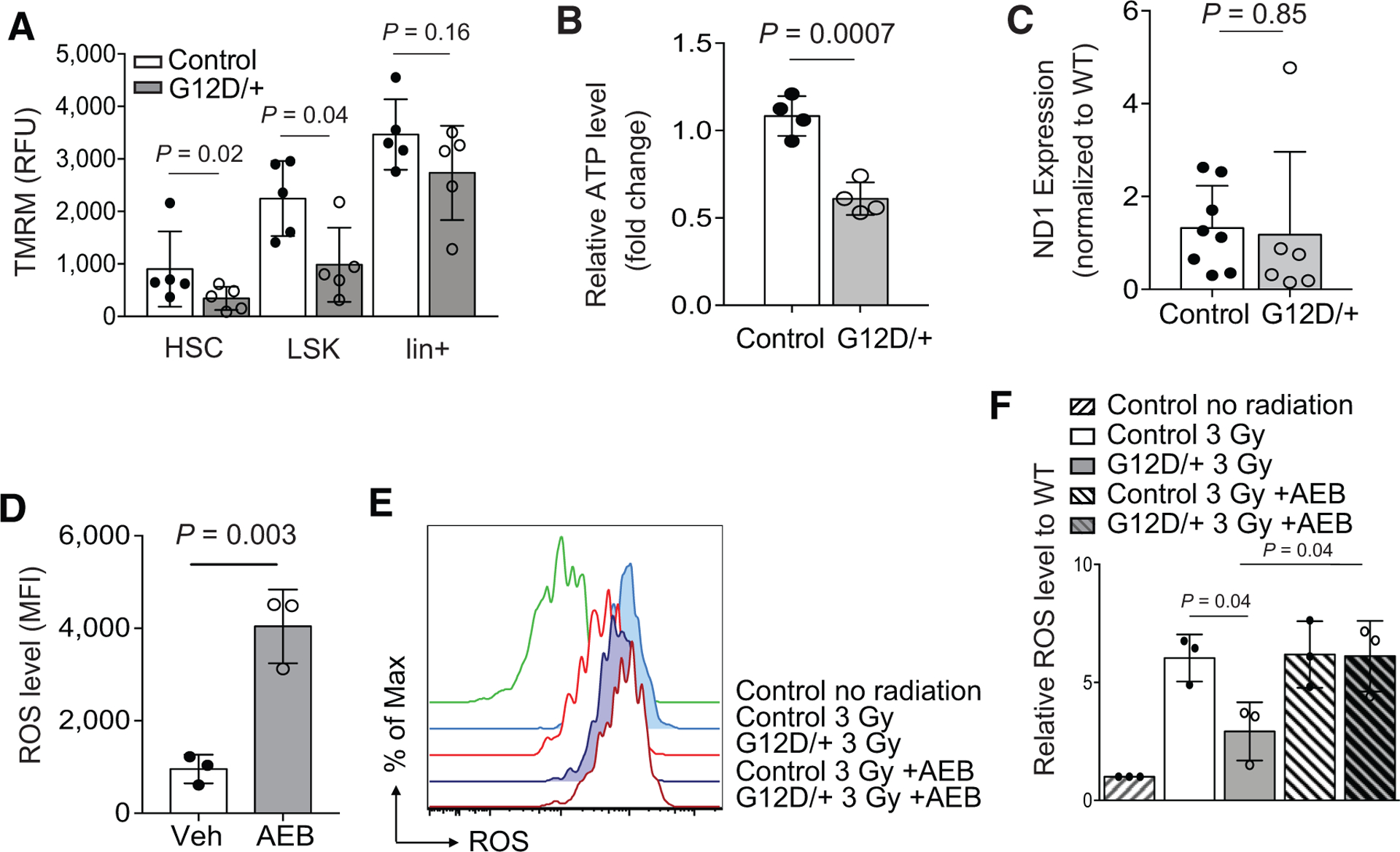Figure 6.

N-RasG12D reduces mitochondrial activity and ATP contents in HSCs. A, Mitochondrial membrane potential as measured by TMRM in hematopoietic populations from control or Nras mutant (G12D/+) mice (n = 5). Paired Student t test was used to determine statistical significance. RFU, relative fluorescent units. B, ATP levels of HSCs (400 SLAM HSCs) from control and Nras mutant mice (n = 4). Unpaired Student t test was used to determine statistical significance. C, Mitochondrial content, as measured by the ratio of mitochondrial (copies of ND1 gene) to nuclear (copies of β-actin gene) DNA. DNA was extracted from FACS-sorted 40,000 control and NrasG12D LSKs by DirectTail lysis reagent with proteinase K. ND1 (mitochondrial-encoded gene) copies were quantified by qPCR and normalized to β-actin (n = 8). Unpaired Student t test was used to determine statistical significance. D, Wild-type SLAM HSCs were treated in vitro with the pan-PKC inhibitor AEB, and levels of ROS were measured by flow cytometry using CellRox (n = 3). Unpaired Student t test was used to calculate statistical significance. MFI, mean fluorescence intensity. E and F, Control or Nras mutant mice were irradiated (300 cGy) and injected with two doses (6 and 12 hours after radiation) of AEB (10 μg/g body mass), and ROS levels were measured 24 hours after radiation (n = 3). ANOVA was used to calculate statistical significance. Data represent mean ± SD; n, number of mice.
